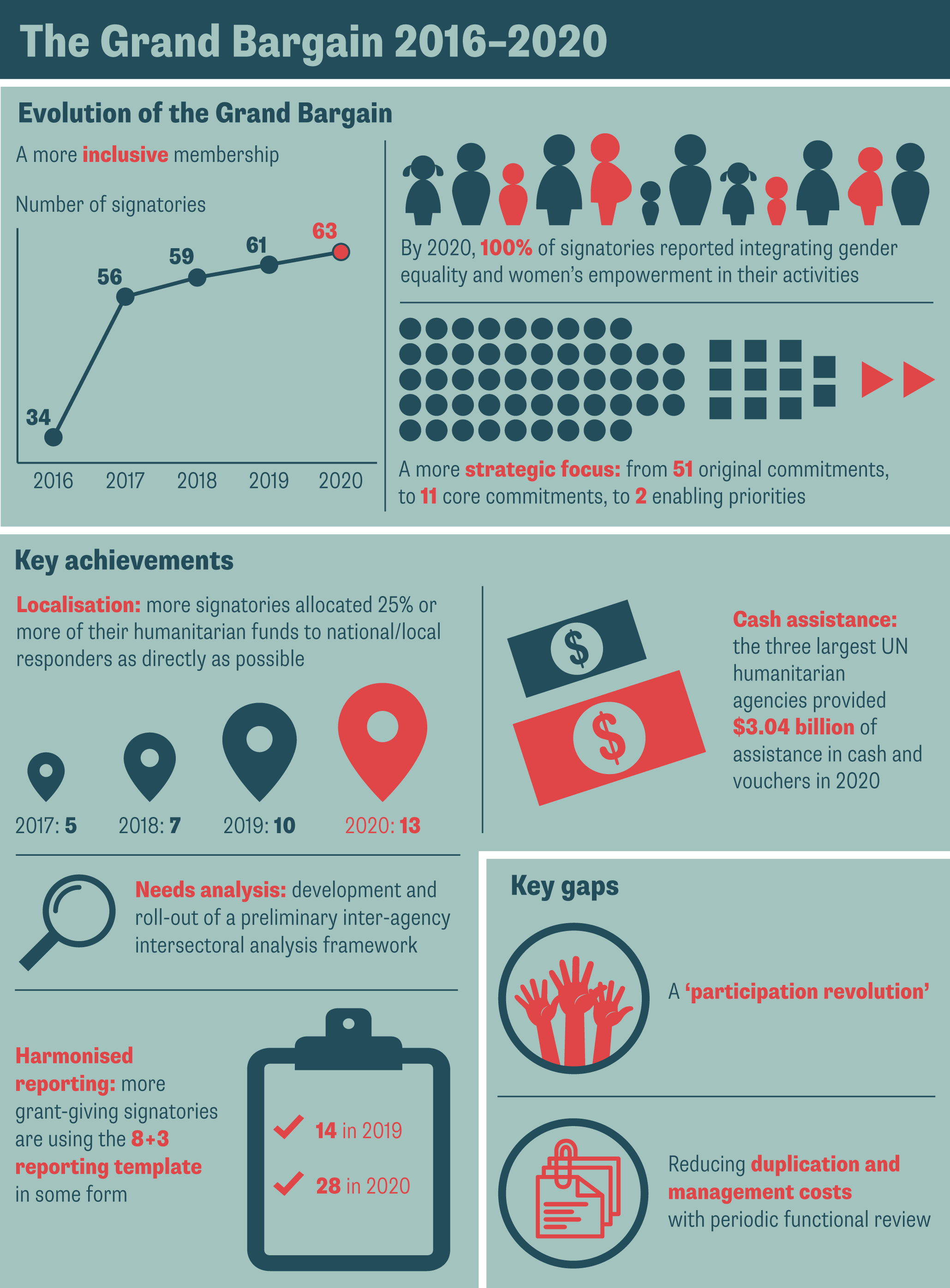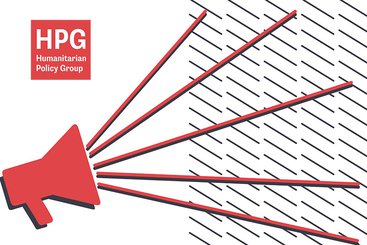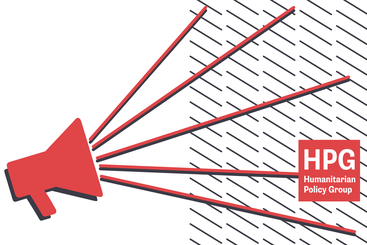In May 2016, a ‘Grand Bargain’ was agreed between 18 donor countries and 16 international aid organisations from the United Nations, international non-governmental organisations and the Red Cross and Red Crescent Movement. The Grand Bargain outlined 51 commitments to improve the efficiency and effectiveness of international humanitarian aid.
Five years on, this annual independent review analyses both the progress made and challenges faced during 2020, and the longer-term outcomes achieved since the Grand Bargain was established. These are summarised in the below infographic.
Recommendations for the Grand Bargain 2.0
On 1 February 2021, the Principals and Ministers of the Facilitation Group met with the Eminent Person to discuss the status of the Grand Bargain at the five-year mark and propose how the collective of signatories could move forward. They agreed on a revised and refined ‘Grand Bargain 2.0’ for a period of two years to mid-2023, with an overall objective to ensure ‘better humanitarian outcomes for affected populations through enhanced efficiency, effectiveness and greater accountability’. This objective was complemented with two new enabling priorities – better-quality funding and improved support to local responders, with increased engagement of affected populations.
The recommendations in this report (and summarised below) are intended to support a clearer focus, a stronger function and a simpler format for the Grand Bargain 2.0.
- Clarify the theory of change and plan of action, including ambitious but achievable and measurable targets.
- Enable better quality, flexible and predictable funding.
- Increase support for local responders, with a focus on fairer and more appropriate distribution of leadership and decision-making.
- Realise the participation revolution and move to a more demand-driven humanitarian response.
- Shift tactics – adopt a ‘caucus’ approach to tackle the most acute or sensitive political obstacles to progress.
- Increase outreach to local governmental and non-governmental actors.
- Reinforce leadership and governance to enable a more explicitly political function for the Grand Bargain 2.0.
- Simplify the coordination structures and bureaucracy around the Grand Bargain to ensure greater efficiency and focus.
- Strengthen accountability, with a wider understanding of who signatories are accountable to, including affected populations and taxpayers in donor countries.
Correction
This report was first published online on 8 June 2021. This version was updated on 11 June 2021 to correct an error on page 60.







